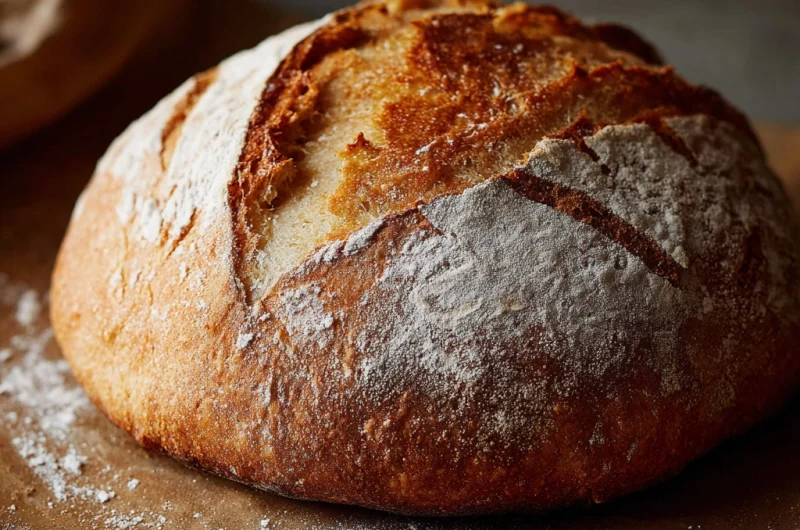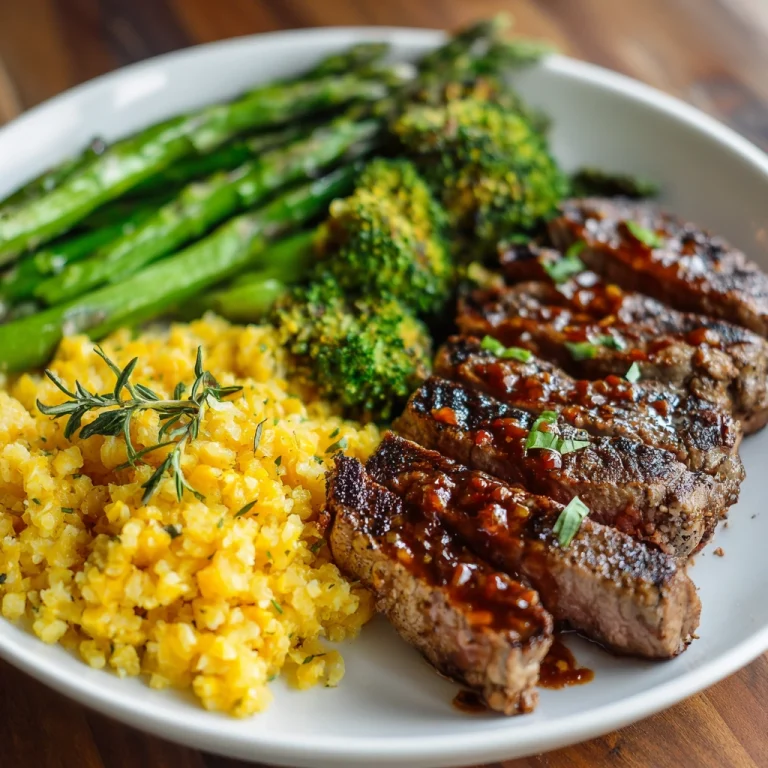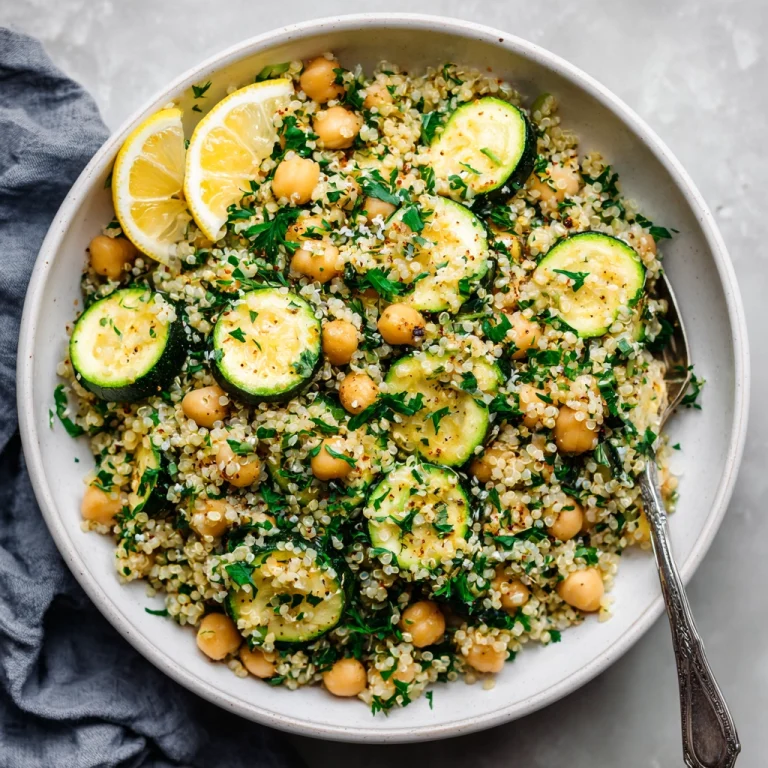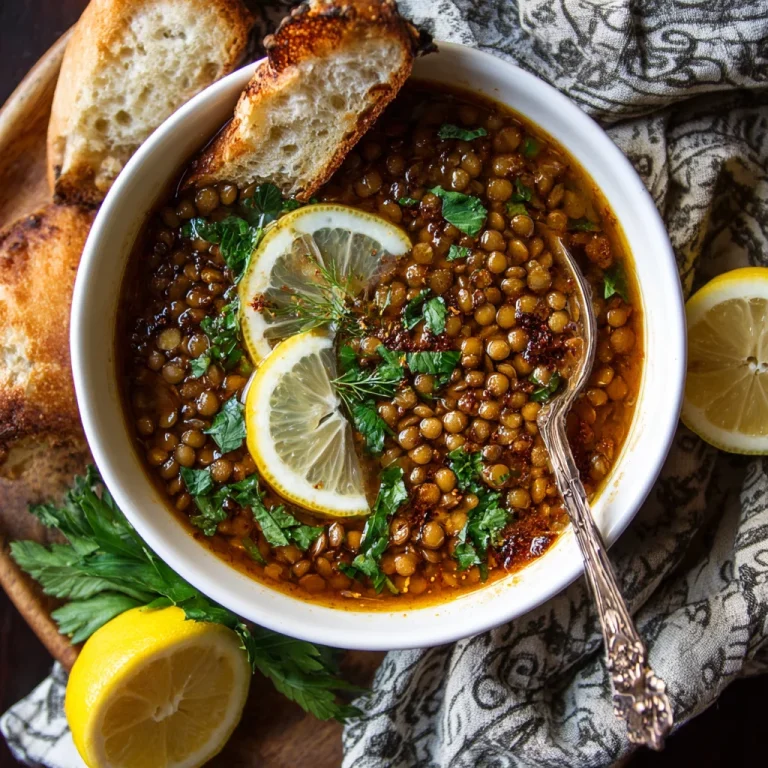Bread Recipes – A Complete Guide to Baking Perfect Loaves at Home
The smell of freshly baked bread drifting from the kitchen can instantly transform a house into a home. Baking bread is more than a cooking task—it’s an experience that connects you to centuries of tradition, creativity, and comfort. Each loaf tells its own story, from the rustic, crusty breads of Europe to the soft, pillowy loaves enjoyed in family kitchens around the world.
Making bread at home is not just about taste; it’s about the joy of creating something with your own hands. From the gentle kneading of dough to the anticipation as it rises, baking bread is both a science and an art. Whether you’re a seasoned baker or just starting out, learning to make your own bread gives you control over ingredients, texture, and flavor. Plus, it’s far healthier and more cost-effective than store-bought alternatives.
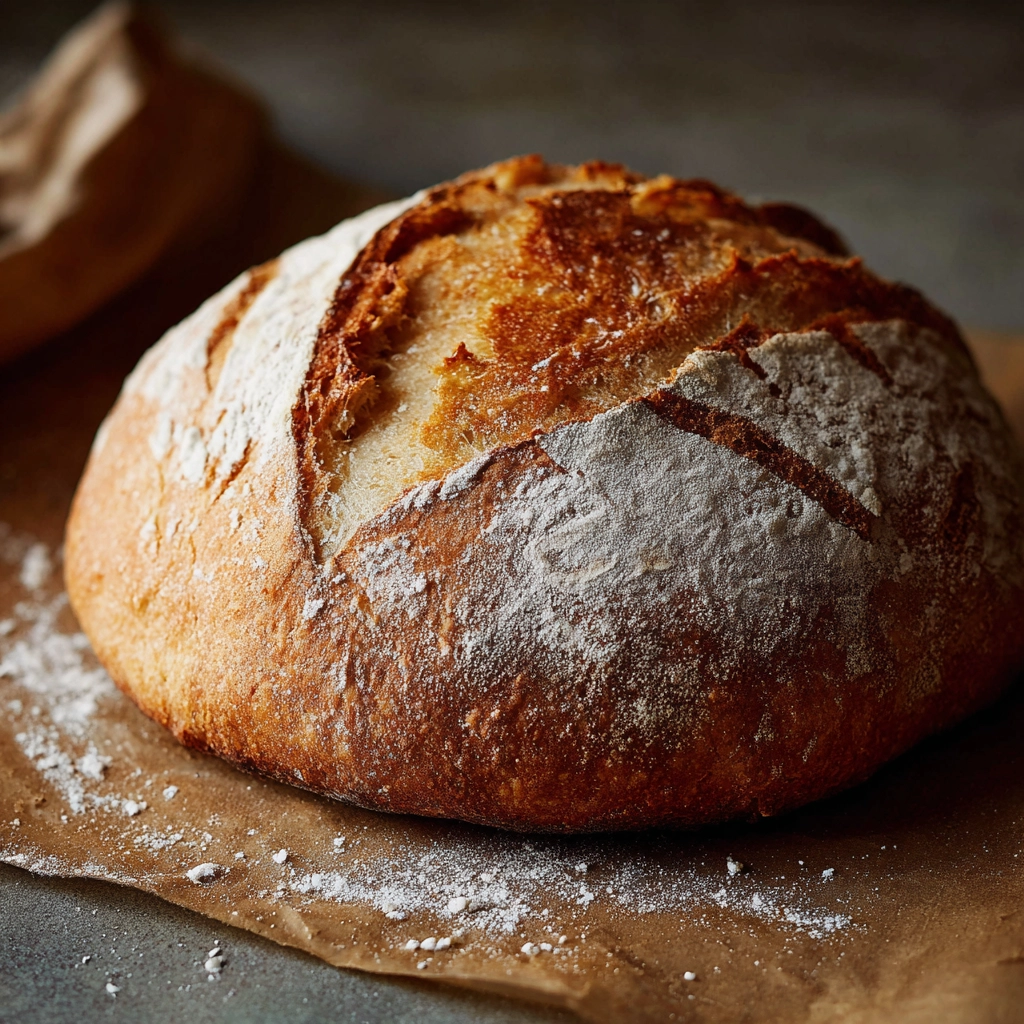
Ingredients Needed
Below is a list of ingredients for a basic white bread loaf along with their approximate calorie counts (per total recipe).
| Ingredient | Quantity | Approx. Calories |
|---|---|---|
| All-purpose flour | 500 g (4 cups) | 1,820 kcal |
| Warm water | 300 ml (1 ¼ cups) | 0 kcal |
| Instant yeast | 7 g (2 tsp) | 21 kcal |
| Sugar | 15 g (1 tbsp) | 60 kcal |
| Salt | 8 g (1 ½ tsp) | 0 kcal |
| Olive oil (optional) | 15 ml (1 tbsp) | 120 kcal |
Step-by-Step Cooking Instructions
- Activate the Yeast
In a small bowl, combine warm water (about 110°F / 43°C) with sugar and yeast. Stir gently and let it sit for 5–10 minutes until foamy. This step helps ensure your yeast is alive and ready to work. - Mix the Dough
In a large mixing bowl, combine the flour and salt. Gradually pour in the yeast mixture, stirring with a wooden spoon or dough hook until the dough comes together. - Knead the Dough
Transfer the dough to a lightly floured surface. Knead for 8–10 minutes until smooth and elastic. If you’re using a stand mixer, knead with the dough hook for about 6 minutes. - First Rise
Shape the dough into a ball and place it in a greased bowl. Cover with a damp cloth or plastic wrap and let it rise in a warm spot for 1–2 hours, or until doubled in size. - Shape the Loaf
Punch down the dough to release air. Shape it into a loaf and place it in a greased loaf pan or on a baking sheet. - Second Rise
Cover again and let it rise for 30–45 minutes until it has puffed up noticeably. - Bake the Bread
Preheat your oven to 375°F (190°C). Bake for 25–30 minutes or until the crust is golden brown and the loaf sounds hollow when tapped. - Cool and Serve
Transfer the bread to a wire rack and allow it to cool for at least 20 minutes before slicing. This prevents the inside from becoming gummy.
Tips for Customizing the Recipe
- For a richer flavor: Replace water with milk and add 2 tablespoons of butter for a softer crumb.
- For a healthier twist: Substitute half of the all-purpose flour with whole wheat flour for added fiber.
- To add texture: Mix in seeds, nuts, or dried fruit during the final stages of kneading.
- For a crustier loaf: Place a small oven-safe dish of water in the oven during baking to create steam.
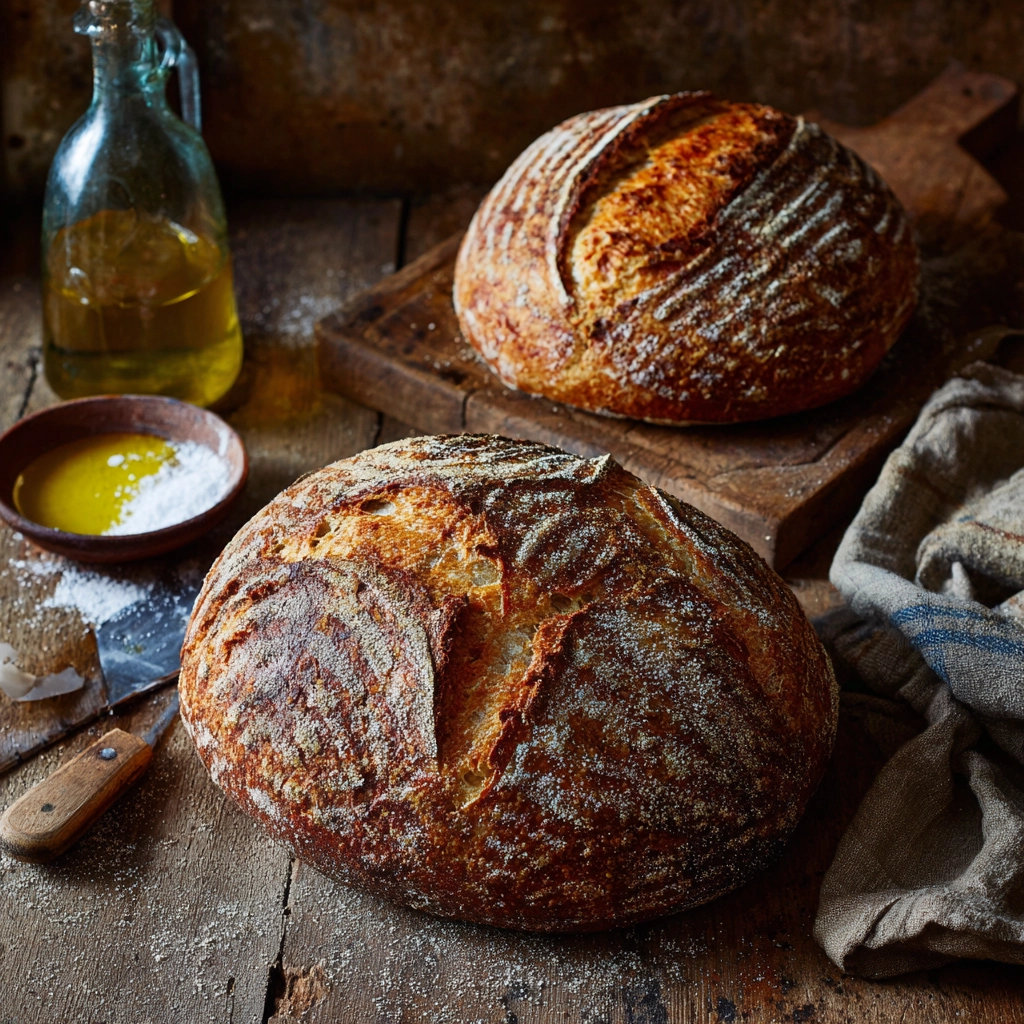
Nutritional Information (Per Slice – based on 12 slices)
| Nutrient | Amount (per slice) |
|---|---|
| Calories | ~168 kcal |
| Carbohydrates | 31 g |
| Protein | 5 g |
| Fat | 2 g |
| Fiber | 1 g |
| Sugar | 1 g |
Serving Suggestions
Fresh bread can be enjoyed in countless ways:
- Breakfast: Toast with butter, honey, or jam.
- Lunch: Use for sandwiches filled with cheese, meats, or roasted vegetables.
- Dinner: Serve alongside soups, stews, or pasta dishes.
- Snacking: Pair with olive oil and balsamic vinegar for dipping.
Bread Recipes – A Complete Guide to Baking Perfect Loaves at Home
Course: Recipes12
servings15
minutes30
minutes168
kcalIngredients
500 g (4 cups) all-purpose flour
300 ml (1 ¼ cups) warm water
7 g (2 tsp) instant yeast
15 g (1 tbsp) sugar
8 g (1 ½ tsp) salt
15 ml (1 tbsp) olive oil (optional)
Directions
- Prepare the yeast mixture: In a bowl, mix warm water, sugar, and yeast. Let it sit for 5–10 minutes until it becomes foamy.
- Mix the dough: In a large mixing bowl, combine the flour and salt. Gradually add the yeast mixture and stir until a dough forms.
- Knead the dough: Place the dough on a floured surface and knead for 8–10 minutes until smooth and elastic.
- First rise: Transfer the dough to a greased bowl, cover, and let it rise in a warm place for 1–2 hours, or until doubled in size.
- Shape the loaf: Punch down the risen dough, shape it into a loaf, and place it in a greased loaf pan.
- Second rise: Cover the loaf and let it rise again for 30–45 minutes until puffy.
- Bake: Preheat your oven to 375°F (190°C) and bake for 25–30 minutes, until golden brown and hollow-sounding when tapped.
- Cool and serve: Remove from the pan, cool on a wire rack for 20 minutes, then slice and enjoy.
Recipe Video
Notes
- Make sure your water is warm, not hot—around 110°F (43°C)—to avoid killing the yeast.
If using whole wheat flour, increase the water slightly as it absorbs more moisture.
FAQs
1. Can I use whole wheat flour instead of all-purpose flour?
Yes, you can substitute whole wheat flour for part or all of the all-purpose flour. Keep in mind that whole wheat flour absorbs more liquid and can make bread denser, so you may need to add a little extra water and knead for a bit longer.
2. How do I make my bread softer?
To achieve a softer loaf, replace water with milk, and add butter or oil to the dough. This enriches the bread and makes it more tender.
3. How can I make my bread crustier?
For a crusty loaf, bake the bread with steam. Place a small oven-safe dish of water in the oven during baking, or lightly mist the dough with water before baking.
4. How long does homemade bread stay fresh?
Homemade bread is best enjoyed within 2–3 days. Store it in a bread box or wrapped in a clean kitchen towel. Avoid sealing it in plastic for long periods, as this can make the crust soft.
5. Can I freeze homemade bread?
Absolutely. Slice the bread first, then wrap it in cling film or place it in a freezer bag. Frozen bread can be stored for up to 3 months. Toast or warm slices in the oven when ready to eat.
Conclusion
Baking bread at home is a rewarding skill that blends tradition, creativity, and nutrition into one delicious loaf. By starting with this simple bread recipe, you can master the basics and then experiment with flavors, textures, and styles to suit your taste. Whether enjoyed warm from the oven or toasted the next morning, homemade bread offers comfort in every bite—and once you’ve tried it, you may never go back to store-bought.

